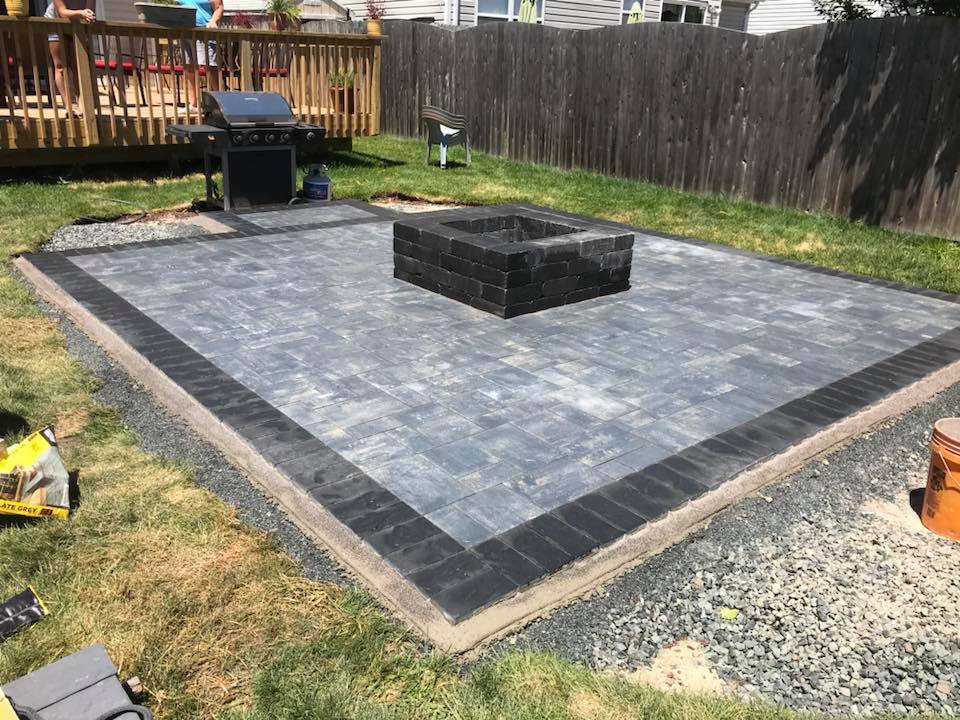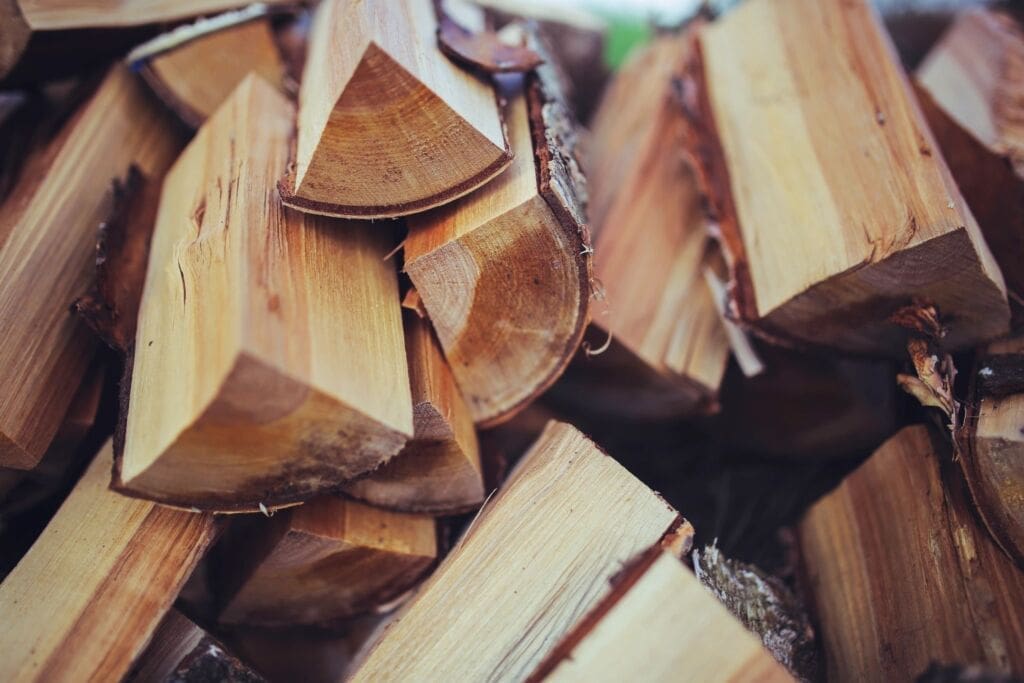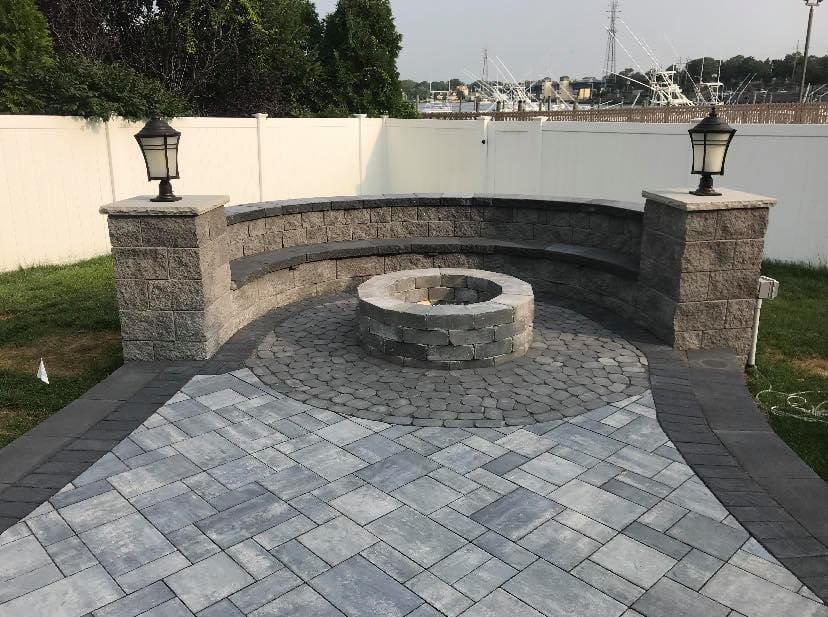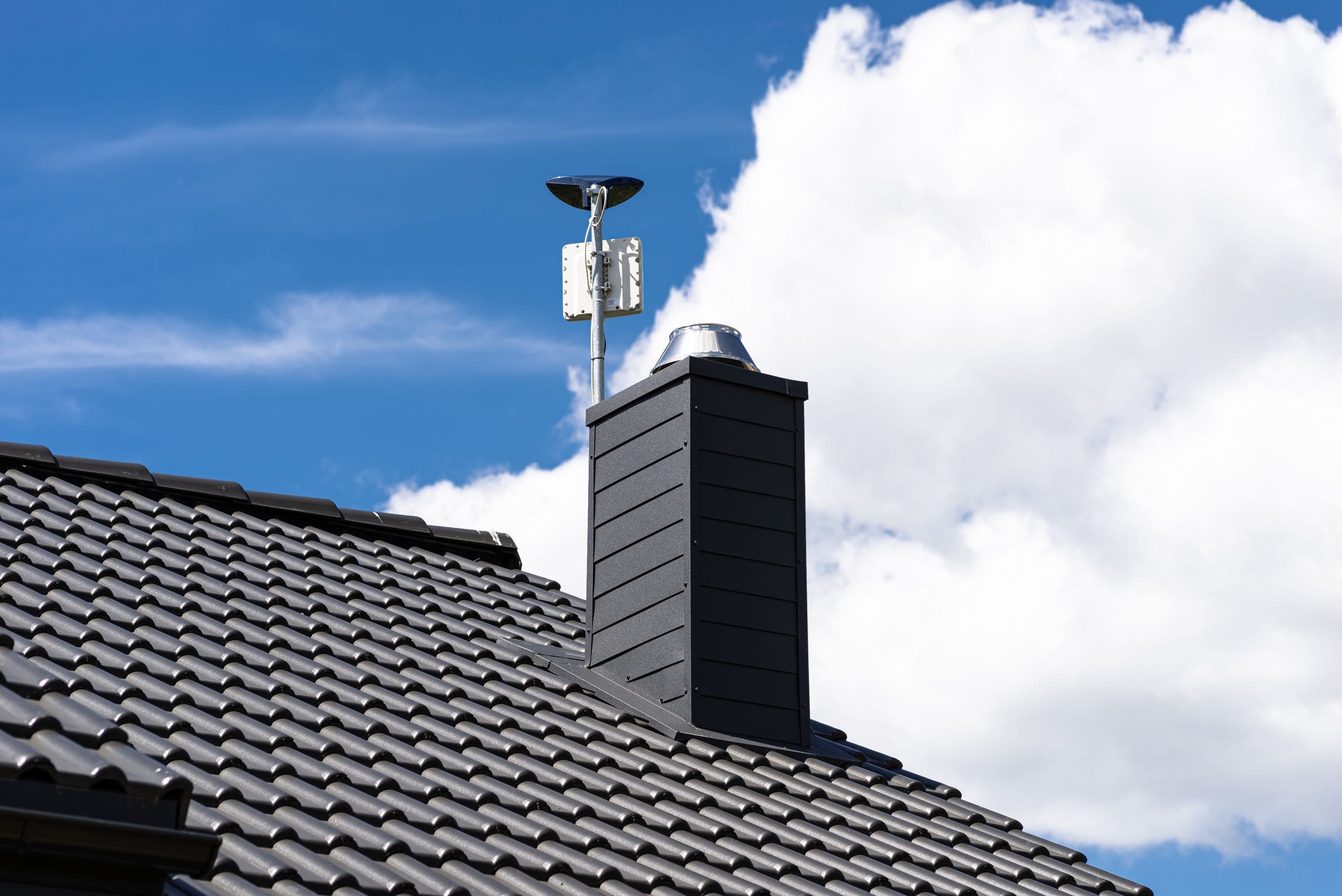Outdoor fireplaces can enhance your outdoor living area’s comfort and overall atmosphere. When adding one to your backyard, you may be unsure whether to construct a custom one or purchase a pre-made outdoor fireplace kit. This article will delve into the benefits of using outdoor fireplace kits and guide you in choosing the best one to suit your needs.
What is an outdoor fireplace kit?
An outdoor fireplace kit is a pre-fabricated unit with all the necessary materials and components to build an outdoor fireplace. The kit includes the fireplace structure, firebox, chimney, and other necessary components.
What are the benefits of using an outdoor fireplace kit?
Using an outdoor fireplace kit has several benefits over building an outdoor fireplace from scratch. First, it saves time and effort since all the necessary components are included in the kit. Second, it ensures that all the components are designed to work together, which reduces the risk of installation errors. Third, it provides a cost-effective option for those who want an outdoor fireplace without spending much money.
How to choose the right outdoor fireplace kit?
Choosing the right outdoor fireplace kit depends on several factors. First, consider the size and style of the outdoor fireplace you want to build. Second, consider the materials used in the kit, such as stone, brick, or concrete. Third, you need to consider the cost and your budget.
How to install an outdoor fireplace kit?
Installing an outdoor fireplace kit requires some basic construction skills and tools. The first step is to prepare the site and lay the foundation. Then, you must assemble the fireplace structure, firebox, and chimney according to the manufacturer’s instructions. Finally, you need to add the finishing touches, such as decorative stone or brick veneer, and install the fireplace door and accessories.
There are several factors to consider before buying an outdoor fireplace or kit.
Size matters
When comparing fireplaces, look at the size of the fire area before the height. If the firebox is small, wood buying and cutting are more complicated as you have to split pieces.
You can request specially cut wood from your supplier, increasing your costs.
When selecting a fireplace, opting for a model with a spacious firebox rather than a tall and narrow design is recommended. While a small fire bowl may appear a cost-effective option initially, it may result in higher expenses in the long run. It’s important to note that a large fireplace does not necessarily require a sizable fire. A minor fire can be achieved by using less wood, regardless of the fireplace’s size.
Proper maintenance
When considering purchasing a fireplace, it’s important to prioritize longevity and safety. Fireplaces made from commercial copper, clay, or sheet steel may not have the same durability as those made from aluminum or cast iron. While sheet metal fireplaces may be available at a lower cost, it’s important to note that they are a disposable option. Once rust forms on the metal, the fireplace has already outlived its usefulness. When choosing a sheet metal fireplace, check the gauge or thickness of the metal to ensure it won’t melt under high temperatures.
If your cast iron fireplace has a sheet metal neck, it’s important to check with the manufacturer to see if replacement parts are available and the cost. Be sure to clarify whether you need frequent replacements for the channel or if you’re looking for a more durable solution. This will help you make an informed decision about maintaining your fireplace.
To prevent rust, it is important to maintain cast iron properly. Maintaining cast iron can be challenging, but it’s worth it in the long run, as a well-maintained cast iron fireplace can last for many years. Additionally, carefully considering your cast iron fireplace’s placement is important.
If you have a cast iron fireplace at home, it’s important to note that it may cause staining on the surface it’s placed on. This is due to the material’s weight and ability to retain heat, which can lead to discoloration or damage to the flooring or hearth it rests on. A protective mat or surface underneath the fireplace is recommended to prevent potential damage.
To prevent rusting on cast iron, it is recommended to apply high-temperature paint periodically. Cast iron is a durable material that can withstand significant wear and tear due to its weight.
Although copper firepits may appear attractive initially, they tend to become discolored with green and rusty tones after regular use. To avoid potential damage caused by rain, many firepit manufacturers incorporate small holes in the base of the design to allow for proper drainage of ash and water. It’s important to note that firepits lacking these drainage holes may accumulate water during rainfall, potentially causing damage and reducing the product’s lifespan.
Cast Aluminum is an excellent choice when it comes to purchasing a fireplace. It has a long lifespan and requires minimal maintenance. Unlike cast iron, it does not warp and has only a slightly lower melting temperature. Additionally, cast aluminum does not rust and is much lighter in weight than cast iron, making it easier to move around. These features make cast aluminum a durable and convenient option for those looking for a reliable fireplace.
When considering purchasing a fireplace, it’s important to consider the materials it’s made of. Copper, clay, or sheet steel fireplaces may not have the same longevity or safety features as aluminum or cast iron. Sheet metal fireplaces may be available at a lower cost, but they are considered a disposable option. Once rust appears on the metal, the fireplace has already reached the end of its useful life. Before purchasing, it’s important to check the gauge or thickness of the metal to ensure it’s thick enough to withstand the heat without melting.
Weigh it
When evaluating different fireplaces, it’s important to consider the weight. This is because fireplaces are typically sold by weight, with materials such as copper or cast iron consistent within each category. To ensure an accurate comparison, compare fireplaces made of the same material.
Aluminum feature
Choosing a cast aluminum fireplace is smart if you’re new to outdoor activities. Not only is it easier to maintain, but it’s also lightweight and portable. You can easily move it to different locations, such as your lake house or a storage unit during winter months in Northern areas. Store it properly when not in use to ensure its longevity and avoid theft.
Types of outdoor fireplaces
Patio fireplaces have become increasingly popular in recent years, adding warmth and ambiance to outdoor living spaces. If you’re considering installing a patio fireplace, there are a few things you should keep in mind. Firstly, ensure that you have enough space for the fireplace and that it complies with local building codes. Next, choose the right fuel for your fireplace, whether wood, gas, or electric.
Consider the style of your fireplace and how it will complement your existing outdoor decor. Finally, it’s important to maintain your fireplace regularly to ensure it functions safely and efficiently. This includes cleaning the chimney or flue and inspecting all components for damage or wear. With the right care and attention, a patio fireplace can provide a cozy and inviting atmosphere for years.
Clay fireplace
One of the major concerns with a clay fireplace is its tendency to fall apart, causing a significant mess suddenly. To prevent this from happening, it is recommended to avoid placing the clay fireplace on surfaces prone to heat or fire damage, such as wooden decks. Instead, placing it on a sturdy surface made of cement or tile is advisable.
When considering purchasing a clay fireplace, it’s important to prioritize safety measures. Adding a spark arrestor and a mouth screen can prevent potential hazards and are worth the additional cost. Remember that clay fireplaces are generally less expensive but have a shorter lifespan than aluminum or cast iron options.
Surround-view fireplaces and raised firepits

A surround-view fireplace refers to a type of fireplace that offers a panoramic view of the fire from multiple angles. Unlike traditional fireplaces with a single viewing area, surround-view fireplaces are designed with glass panels on two or more sides, allowing for an unobstructed view of the flames from different vantage points.
These fireplaces are often installed in the center of a room or positioned as a focal point in a living space, providing a captivating and immersive experience. The multi-sided glass panels offer an expanded viewing area, enabling individuals in various areas of the room to enjoy the warmth and visual appeal of the fire.
Surround-view fireplaces are available in various designs, including linear or rectangular shapes, as well as corner units that can fit snugly into a corner of a room. They can be fueled by gas, wood, or electricity, offering flexibility in installation and maintenance.
Surround-view fireplaces offer a unique and captivating way to enjoy the beauty and warmth of a fire, enhancing the aesthetic appeal and ambiance of any living space.
If you’re considering purchasing or installing a raised firepit, it’s important to check if it includes a lid. Without a lid, ash from the firepit can easily scatter and create a mess on your patio when it rains. Ensuring your firepit has a lid can help keep your outdoor space clean and tidy.
Wood burning stoves
They have become increasingly popular in recent years as an efficient and cost-effective way to heat homes. But you are seeing them be put to use outside. These stoves are crafted to withstand the elements, providing efficient and comforting heat. Whether creating an inviting outdoor seating area, a cozy patio, or a dedicated outdoor cooking space, a wood-burning stove can be a focal point, radiating warmth and creating a rustic and inviting atmosphere. With their sturdy construction and durable materials, outdoor wood-burning stoves offer a reliable and enjoyable way to enjoy the crackling flames and the soothing heat of a traditional fire while enjoying the great outdoors.
What type of fireplace fuel to burn?

If you plan to use an outdoor fireplace, hardwood is the go-to fuel choice. Among the different types of hardwoods available, Pinon wood stands out for its pleasant pine scent, ability to keep the flame active, and ability to generate good heat. Additionally, it can help keep insects away. However, other fuel options exist, including propane, gel inserts, manufactured firelogs, and natural gas.
To enhance the fragrance of your space, consider adding pine cones or applewood. These natural elements can contribute to a more pleasant and inviting atmosphere.
Many fireplaces are equipped with inserts that allow using natural gas or propane as a fuel source.
Outdoor fireplace kits are a great option for those who want to add a fireplace to their outdoor living space without the hassle of building one from scratch. By choosing the right kit and following the manufacturer’s instructions, you can enjoy a warm and cozy fire in your backyard in no time.
But is it right for you?
A good fireplace burns more cleanly and efficiently than a firepit design with no smoke stack. The fireplace draws air into the fire and blows out the neck for an efficient burn. Firepit designs tend to smoke and smolder much more than a traditional fireplace designs because of poor airflow.
With so many options available, deciding which direction to take can be difficult. Our goal is to provide helpful information that guides you toward making an informed decision.






